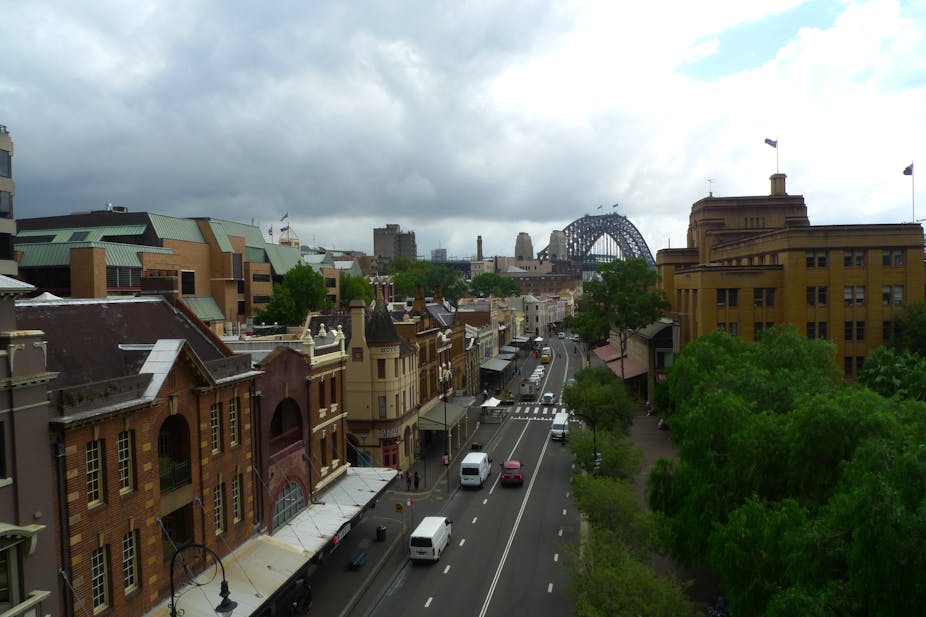Australia’s future population is again under the spotlight. The Committee for Economic Development of Australia (CEDA) has just released a new report on Australian population futures.
And focus has sharpened on Sydney’s future population.
If Sydney continues on its current trajectory, its population will continue to grow by about 1% per annum in the coming years. But the NSW Government has announced it wants to grow the city’s population as part of its economic development strategy.
A debate about Sydney’s future population size – and its sustainability – cannot be held in isolation from a debate about how the people of Sydney will live. This is because the ecological footprint (a standardised measure of demand for natural resources) of a city is a product of both population and per capita consumption of resources (such as energy, water, building materials, food, transport).
In turn, the way people live will depend on the pattern of urban development. If Sydney continues to develop in the conventional way – low density urban development, with a preponderance of large, detached houses and a reliance on the private motor car for transport – the ecological footprint of our city will grow and it will become increasingly unsustainable.

But we could transform our city to be one with greater population density – with increasing numbers of people living in apartments and townhouses, and improved mass transit options. This would constrain our ecological footprint from housing and transport and put Sydney on a path to being a more sustainable city.
What would this mean for human health?
There is mounting evidence that sprawling, car-reliant, urban development is contributing to sedentary ways of living and contemporary health problems (such as obesity, type II diabetes, heart disease, cancers, depression).
Recent research has shown that people who live in more compact urban areas, where it is convenient to walk and cycle, are more likely to be physically active and less likely to be overweight.
What should our priorities be then?
First, we should plan so that people can do most of the things they need to do on a daily basis (such as getting to school, university and work; shopping for food and other necessities) by walking, cycling, or some form of mass transit.

This will mean improving conditions for walking and cycling by ensuring safe routes for these modes of transport are given equal priority to safe routes for motor car transport. It will also mean investing in mass transit infrastructure (trains, trams, buses).
Importantly, it will also mean getting serious about distributing economic development across the whole metropolitan area. Our historical pattern of urban development, with dormitory suburbs across western Sydney, means that many people spend several hours a day commuting for work or education. This can only change if we invest in suburban economic development and bring the jobs and higher education opportunities closer to home.
Second, we should re-imagine our relationship with the public domain. Historically, Australian city governments have not needed to invest in public spaces because most people have lived in houses with plenty of room in the backyard. As more people live in apartments and townhouses, we should invest in the public domain and develop lively, safe and convivial public spaces.
Third, we should protect the remaining fertile agricultural land in the Sydney basin. This will help secure future food supply for a larger population. Indeed, by doing the first two things, there will be less need for the city to spread out and we could put a firm growth boundary around the city.
So, can a big Sydney be a sustainable and healthy city?
The answer to this question will depend on how the people of Sydney live in the future. In turn, this will depend on the way we plan, design, develop and manage our city.
If we transform our city – and enable people to live in more compact and active ways – Sydney could house a bigger population and be sustainable and healthy.
However, if we simply grow the city’s population without investing in good planning and infrastructure, future generations of Sydneysiders will be left to deal with the health and environmental consequences. They will not thank us.
This is an extract from an address by Professor Anthony Capon to the 3rd Australasian Symposium on Design and Health at University of Technology, Sydney on Thursday 29 March 2012. More information on health and cities is available from Healthy City Design.

